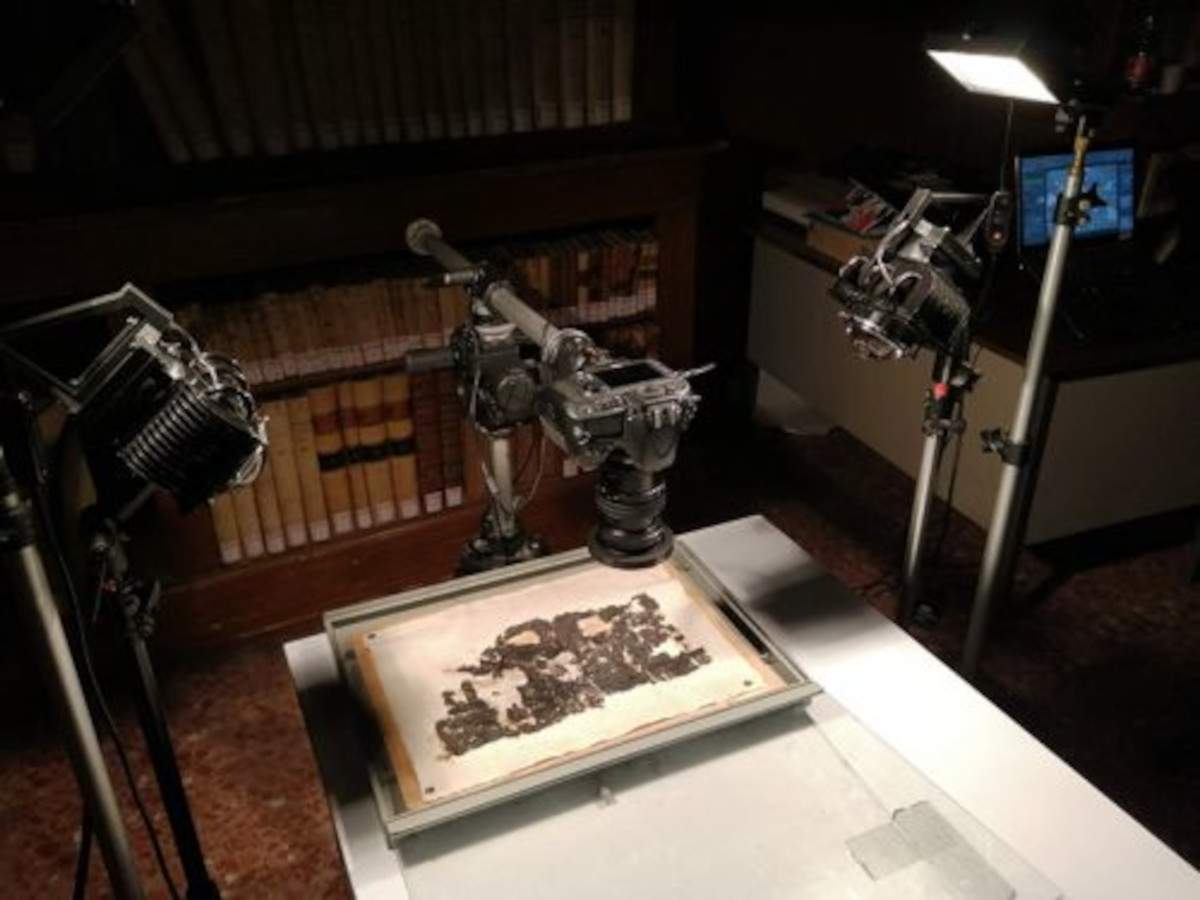More than 1,000 words, corresponding to 30 percent of the text, have emerged from the Herculaneum papyrus charred following the eruption of Vesuvius in 79 A.D., which contains the History of the Academy of Philodemus of Gadara (110-after 40 B.C.), thanks to the application of innovative methodologies in the context of the GreekSchools project. This project, which received ERC (European Research Council) funding of 2,498,356 euros, started in 2021 and has a duration of five years and eight months.
The research is coordinated by Graziano Ranocchia of the University of Pisa, in collaboration with the Institute of Cultural Heritage Sciences (CNR-Ispc) and the Institute of Computational Linguistics “Antonio Zampolli” (CNR-Ilc) of the National Research Council. The National Library in Naples, where the papyrus is preserved along with many others, was the venue today for the presentation of the progress of the research.
In addition to analyzing the state of conservation of these artifacts, the project aims to publish anupdated edition of Philodemus’ Review of Philosophers, using imaging techniques and advanced philological approaches. This text represents the oldest history of Greek philosophy available to us. Inside, we find the History of the Academy, which contains valuable information about Plato and the evolution of the Academy under the leadership of his successors.
“Compared to previous editions, there is now an almost radically changed text, implying a number of new and concrete facts about various academic philosophers. Through the new edition and its contextualization, scholars have arrived at unexpected inferences of interdisciplinary scope for ancient philosophy, Greek biography and literature, and book history,” comments Graziano Ranocchia. “Some earlier additions have been replaced, some previously fragmentary passages have been integrated or re-read. The increase in text corresponds roughly to the discovery of ten new medium-sized papyrus fragments. The new readings often draw on new and concrete facts about Plato’s Academy, Hellenistic literature, Philodemus of Gadara and ancient history in general,” adds Kilian Fleischer, the editor of this valuable papyrus as part of the GreekSchools project.
Among the most important new findings is that Plato was buried in the garden reserved for him (a private area designated for the Platonic school) of the Academia in Athens, near the so-called Museion or sacred shrine to the Muses. Until now it was only known that he was buried generically in the Academy. Still on the subject of Plato, it emerges that he was sold as a slave on the island of Aegina as early as perhaps 404 B.C., when the Spartans conquered the island, or alternatively in 399 B.C., soon after Socrates’ death. Until now it had been believed that Plato was sold into slavery in 387 B.C. during his stay in Sicily at the court of Dionysius I of Syracuse. In another passage, in a dialogue between characters, Plato is scathing about the musical and rhythmic skills of a barbarian musician originally from Thrace.
“The GreekSchools project also aims to develop methods of investigating the manuscripts by applying the most advanced imaging techniques available today (optical imaging in the infrared and ultraviolet, molecular and elemental imaging, thermal imaging, tomography, digital optical microscopy, and so on),” points out Costanza Miliani of the CNR-Ispc. Personnel from this institute, Cnr-Scitec and other European research centers, making use of mobile instrumentation from the Molab platform afferent to the European Research Infrastructure on Heritage Science E-RIHS, apply noninvasive techniques to opisthograph and layered papyri in order to read inaccessible text on the verso or hidden within multiple layers.
 |
| Thanks to technology we can now read the Herculaneum papyrus charred in the eruption of Vesuvius |
Warning: the translation into English of the original Italian article was created using automatic tools. We undertake to review all articles, but we do not guarantee the total absence of inaccuracies in the translation due to the program. You can find the original by clicking on the ITA button. If you find any mistake,please contact us.